In case you missed it, Connie Malamed and JD Dillon both recently recommended 5 good books for Learning & Development pros. You should definitely slide over to their sites and check these out.
- Five New L&D Books To Check Out by Connie Malamed (@elearningcoach)
- 5 Must Reads for Modern Learning Pros by JD Dillon (@JD_Dillon)
While I haven’t read a couple of the newest ones, I’ve read most of them and I’ll second those recommendations. Of course, everyone’s list will be slightly different based on things like the type of work you do, your experience level, interests and other factors.
Since Connie and JD got me thinking about it, I thought I’d share five books that have been helpful for me. So without further delay, here is my own take on the five books modern workplace professionals should read:

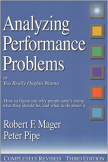
Analyzing Performance Problems:
Or, You Really Oughta Wanna–How to Figure out Why People Aren’t Doing What They Should Be, and What to do About It
Robert Mager & Peter Pipe
Not only does this classic have the best subtitle of all time, it also provides a fantastic step-by-step process for solving performance problems. Mager and Pipe do this from a holistic perspective focused on finding the true problem and then looking for the most effective and efficient solution.
Personally, I think everyone involved with any kind of training or performance should have a copy of the Performance Analysis Flow Diagram posted on their wall. This is a visual representation of their 7 step model shown below and detailed here.
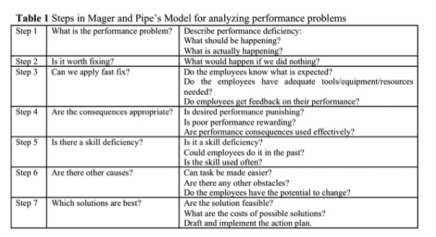
https://hptmanualaaly.weebly.com/mager-and-pipes-model.html
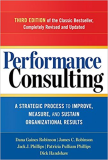
Performance Consulting:
A Strategic Process to Improve, Measure, and Sustain Organizational Results
Dana Gaines Robinson, James Robinson, Jack Phillips Partricia Phillips & Dick Handshaw
This book is a logical next step from Mager’s. Once you’re armed with a little understanding and a performance mindset, you’ll find super useful advice in this book about how to reframe conversations with SMEs and stakeholders away from predetermined solutions and towards the most effective/efficient options. There are a number of valuable learnings you’ll be able to apply right away. Things like the SHOULD-IS-CAUSE logic Gaps Map and tips for reframing conversations are things that everyone in any training/L&D organization can easily apply to make noticeable improvements.

E-learning and the Science of Instruction:
Proven Guidelines for Consumers and Designers of Multimedia Learning
Ruth Clark & Richard Mayer
This is an essential research-based guide on designing multimedia learning content. This book is the place to start for understanding how best to present content with text, graphics, and audio as well as considerations for when these guidelines are most effective. The latest update includes relevant insights from psychology and the Cognitive Theory of Multimedia Learning principles that every designer should know.

Nobody Wants to Read Your Sh*t:
Why That Is And What You Can Do About It
Steven Pressfield
Even if all you read is the title of this book, you’ll learn an important lesson the author learned when he started out in advertising – nobody wants to read anything. The point is people are busy and the sooner we recognize that and act accordingly the better off we will be.
His simple approach can easily be summed up in these three steps:
- Streamline your message.
- Make its expression fun. Or sexy or interesting or scary, etc. (Tap into emotions.)
- Apply #1 and #2 to everything you do.
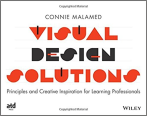
Visual Design Solutions:
Principles and Creative Inspiration for Learning Professionals
Connie Malamed
When it comes down to it, everyone is a designer. (Many people just don’t realize it.) There is research that says of all the factors impacting first impressions, 94% are design-related. No matter what medium you work in from elearning and multimedia to documents and email, if the visual design fails, you’re chances for success are greatly diminished.
Almost everyone realizes that the right design can have a huge impact, many of those same people don’t know where to start learning the foundational principles to help them up there design game. This is that starting point.
This book blends the process and principles of graphic design with accessible ways to apply those sometimes fuzzy concepts to your own actual, real world projects. Add a boatload of practical examples to illustrate each concept and you’ve got a ‘must have’ for your book collection.
How many of these have you read? What is your top 5? What books have you read that have been the most valuable to you personally?
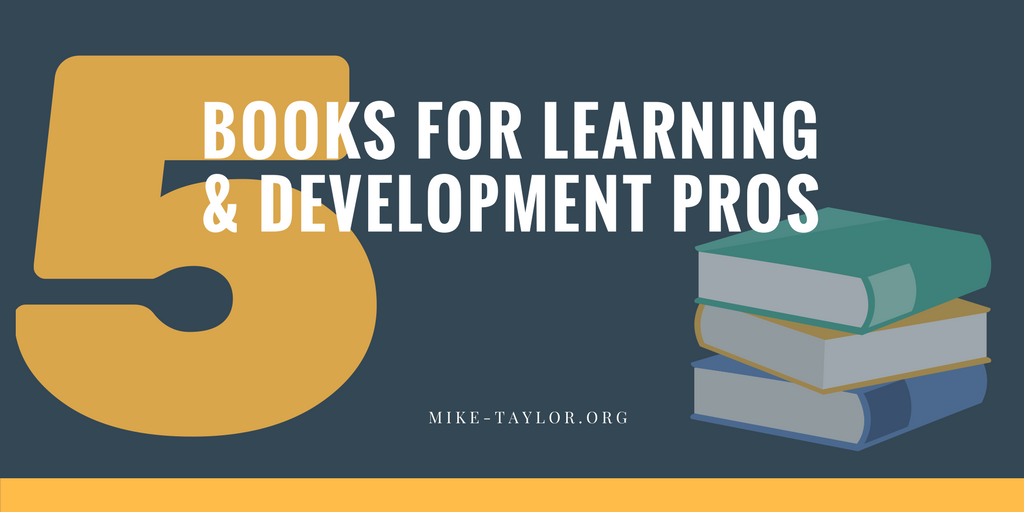
6 thoughts on “5 More Great Books for Your Learning & Development Bookshelf”